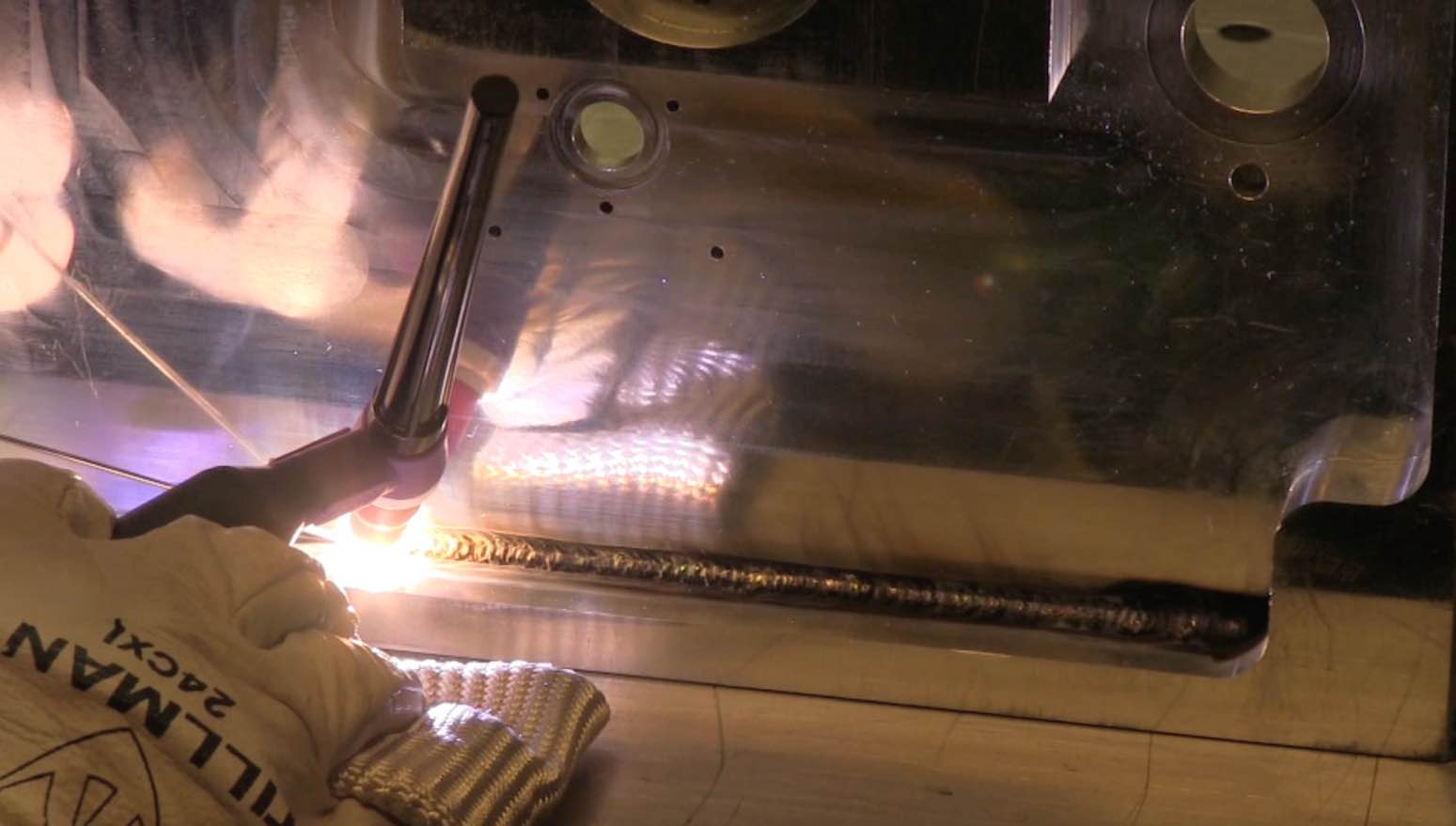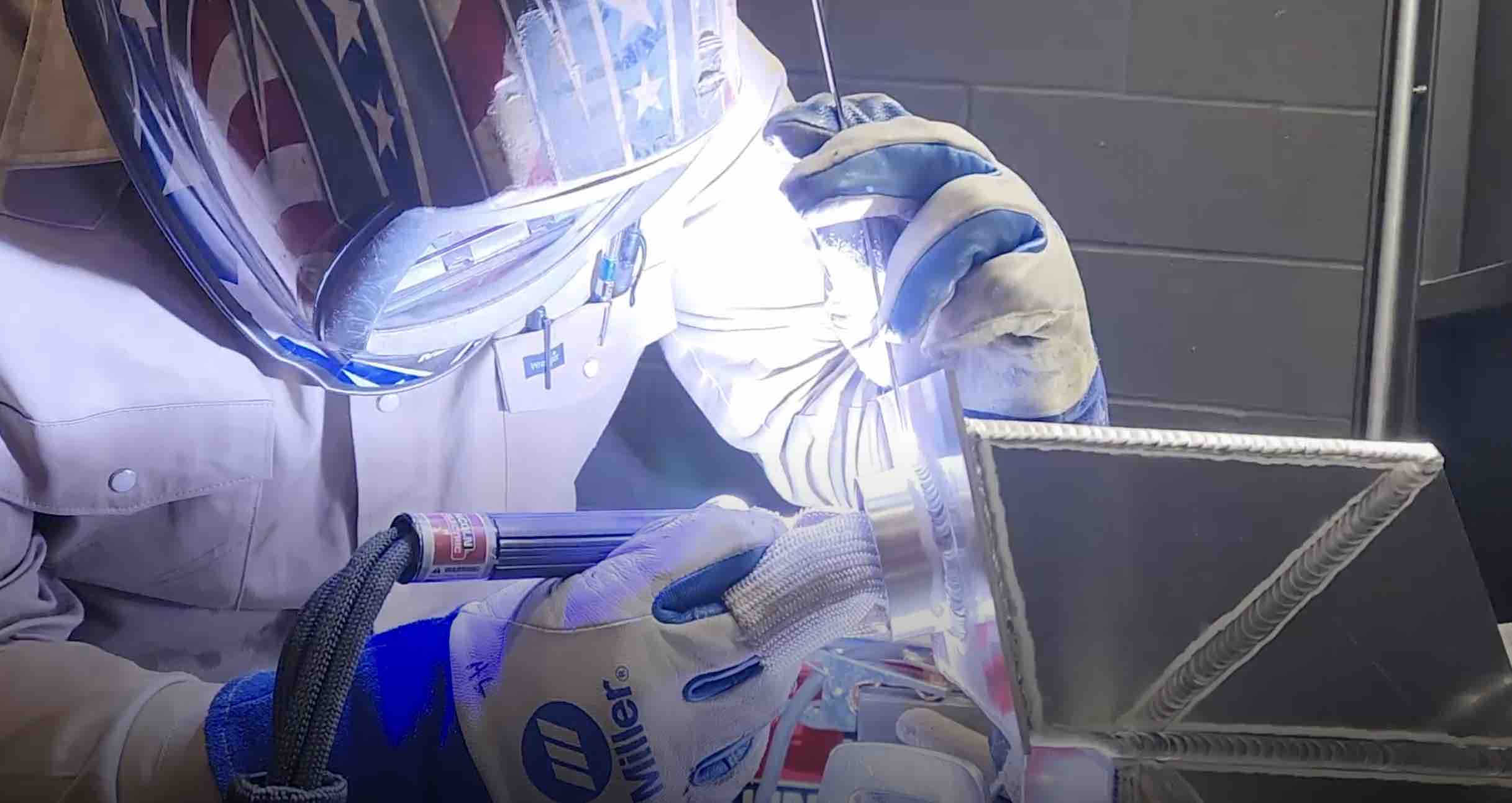TIG Welding Aluminum using DCEN Electrode Negative with helium
This weekly video is about tig welding aluminum using DC.
- HOME
- TIG WELDING ALUMINUM
- How to Tig Aluminum
- Tig Welding Aluminum
Its not something you can use on all aluminum jobs but it is definitely something that is very useful to know.
I can remember a handful of thick aluminum jobs I took on over the years where I used this technique with good success.
While tig welding aluminum on DC has its limitations, its great for clean thick aluminum.
see more tig welding aluminum videos or go to the main TIG welding page
- So exactly where and why would you want to tig weld aluminum on DCEN?
- what are the limitations?
- What are the main things you need to pay attention to?
- Can you weld over top of a DC weld using AC?
- What are the best settings?
- Watch the video and you will learn the answers to all this and more.
Roy Crumrine (aka Crummy_welding on Instagram) has done quite a bit of DC tig aluminum welding so I dropped in on Roy last summer and filmed this video.
If you want to see some really nice welds, check out Roy on Instagram and you will see why I went to the trouble to enlist his help for this video.
Well lets try to answer some questions…
Exactly where and why would you want to tig weld aluminum on DCEN?
Because helium carries so much more energy and heat than argon, aluminum can be puddled very quickly so a puddle can be made very quickly even on very thick aluminum.
That translates into less distortion because travel speed is quicker, the beads are smaller, and penetration is deeper.
So some applications for tig welding aluminum using DC are: thick aluminum parts where distortion limitations are tight, large aluminum parts that would otherwise need to be preheated, tack welding thick aluminum to prevent cracking of tack welds.
What are the limitations of tig welding aluminum on DCEN?

dirty, oily, or heavily oxidized aluminum does not respond well. Usually AC is better for these situations.
also, if you have large gaps to fill AC is usually better.
What are the main things you need to pay attention to?
Keep a very tight arc, use as little torch angle as possible, and stab the rod with the filler rod. ( the video shows it better than I can explain it)
Can you weld over top of a DC weld using AC?
As a matter of fact, that is a very good technique. The DC penetrates deeply and preheats the part allowing a nice AC weld to be done over top

check out new products on the weldmonger store
What are the best settings to tig welding aluminum on DCEN?
Well there is always a bit of fudge factor because flowmeters are different, and machines are different …but 210 amps, using a #5 cup and 20cfh of helium with a 2% lanthanated 3/32" (2.4mm) along with 1/16” (1.6mm) 4043 filler rod is what Roy used for this video.
A foot pedal was used and as I was watching, I would guess that about 90% of pedal was used at 210 amps to get the puddle started, but after that Roy backed off a bit for the rest of the weld. So I would guess around 180-190 amps were actually used for most of the weld.















